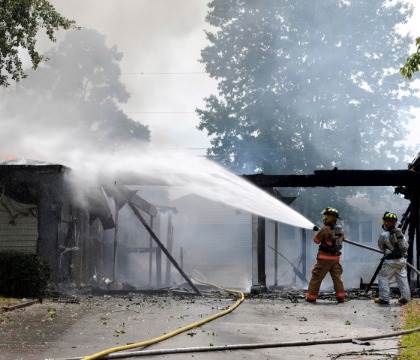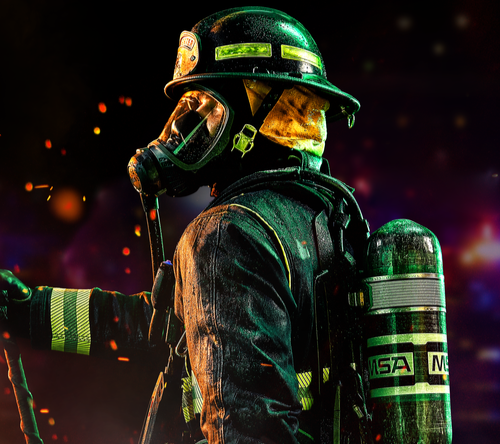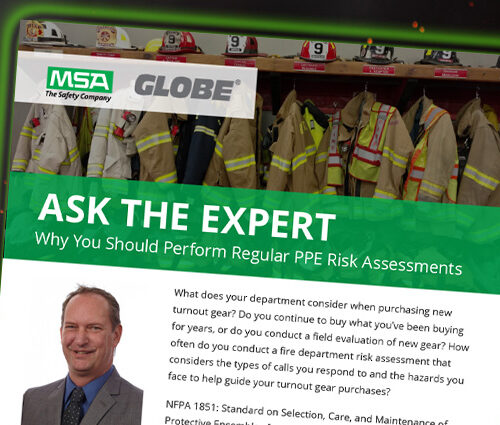
Every firefighter today should know that smoke is dangerous. However, the visible particles of combustion that we see as smoke are just the tip of the fire scene contamination iceberg. There are several toxic substances and carcinogens firefighters need to be aware of and protect against present in smoke.
We are now learning that firefighters and fire investigators need nothing less than the maximum level of respiratory protection during fire overhaul activities. The typical structure fire today involves the high temperature destruction of many types of plastics, foams, various species of wood, fabrics and other materials.
Gases and particulates liberated from these burning materials often contain toxic, reactive and otherwise unhealthy chemicals that are both inhalation hazards and skin absorption hazards.
Phoenix exposure study
Researchers from the University of Arizona and Arizona State University collaborated with the Phoenix (Ariz.) Fire Department in a study to characterize firefighter exposures during fire overhaul operations at 25 structure fires.
During those overhaul evaluations, air quality monitoring found the following substances or compounds exceeded published ceiling values promulgated at the time by the American Conference of Governmental Industrial Hygienists and the National Institute for Occupational Safety and Health:
- Acrolein. Acrolein produces intense irritation to the eye and mucous membranes of the respiratory tract. Acute exposures may result in bronchial inflammation, resulting in bronchitis or pulmonary edema.
- CO. CO is present in all fire environments as a product of incomplete combustion and decreases the oxygen transport of the blood, which results in an inadequate supply of oxygen to the tissues.
- Formaldehyde. Formaldehyde is classified as a probable carcinogen and adverse health effects due to formaldehyde may occur after exposure by inhalation, ingestion or skin contact. Eye irritation can occur at concentrations of 0.01-2.0 ppm, irritation of the nose and throat at 1.0-3.0 ppm, and severe respiratory symptoms at 10-20 ppm.
- Glutaraldehyde. Glutaraldehyde is a potent sensory irritant with the capability to cross-link or fix proteins.
In addition, these harmful substances exceeded published short-term exposure limit values:
- Benzene.
- Nitrogen dioxide.
- Sulfur dioxide.
Oregon overhaul study
In a report published in 2011, “A Study on Chemicals found in the Overhaul Phase of Structure Fires using Advanced Portable Air Monitoring available for Chemical Speciation,” researchers focused on direct gas readings during overhaul, measuring these gases over an extended period in comparison to CO, and compiling data to understand post-fire event airborne hazards.
Over an eight-month period, researchers collected and analyzed data during the overhaul phase of 38 structure fires. They learned that the following chemicals or compounds exceeded NIOSH Immediately Dangerous to Life and Health levels: nitrogen dioxide, acrolein, CO, arsenic and mercury.
Additionally, three compounds were present at or above the Oregon OSHA Short Term Exposure Limit or NIOSH Recommended Exposure Level – Short Term levels: nitrogen dioxide, hydrogen chloride and CO.
Finally, these chemicals were found present at or above the Oregon OSHA Permissible Exposure Limit Time Weighted Average: arsenic, acrolein, benzene, CO, formaldehyde, glutaraldehyde, hydrogen cyanide, hydrogen chloride, mercury, ozone O3 and nitrogen dioxide.
Where are the contaminates coming from?
Among the chemicals researchers suspect can be harmful are:
- Benzene, found in furniture wax.
- Formaldehyde, found in cleaning materials.
- Hydrogen cyanide, used in the manufacture of synthetic fibers, stick- and stain-resistant coatings and flame-retardants added to the foam inside furniture.
When flame retardants and other compounds burn, they create reactive oxygen species – molecules that bind to DNA and cause mutations that can lead to cancer.
“Think about smoke as a bunch of carcinogens, because that’s basically what it is,” Virginia Weaver, a professor of environmental health at Johns Hopkins University, said. “The more synthetics there are in the home, the more chemicals are present in the smoke, and the more chemicals that are carcinogens.”
Protective actions for firefighters
Following the lungs, the skin is the body’s second largest organ in area and it is highly absorptive. Some areas of skin are more permeable than others, specifically the face, the angle of the jaw, the neck and throat and the groin. Skin’s permeability increases with temperature and for every 5-degree increase in skin temperature, absorption increases by 400 percent.
Firefighters can reduce their risk for exposure through the following actions:
- Never breath smoke.
- Wear all appropriate PPE while in the hazard area.
- Undergo gross decontamination immediately upon leaving the hazard area.
- Cleanse the hands, face, neck, and throat with soap and water or disposable wipe immediately upon doffing PPE.
Reducing exposure to these toxins and contaminates can save lives.







